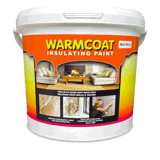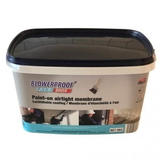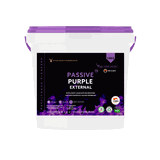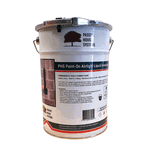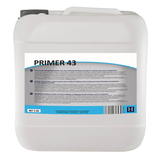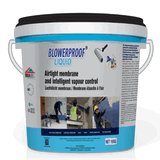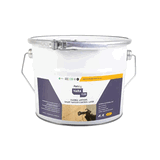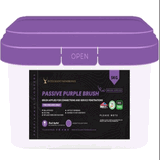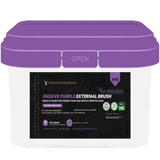- Blogs
- Thermal Paint: Enhancing Comfort and Efficiency in UK Homes
Thermal Paint: Enhancing Comfort and Efficiency in UK Homes

As the chilly winds of winter sweep across the United Kingdom, homeowners seek ways to keep their abodes warm and cosy. Amid rising energy costs, the quest for efficient insulation solutions has become paramount. Enter thermal paint, a fascinating innovation that combines aesthetics with functionality.
In this comprehensive guide, we’ll delve into the world of thermal paint, exploring its benefits, applications, and where to find the best options in the UK.
What Is Insulating Paint?
Insulating paint, also known as thermal paint, is more than just a decorative coating. It’s a smart solution designed to enhance the thermal performance of surfaces. Let’s break it down:
-
Exterior Insulating Paint: For external walls made of brick, stone, render, or concrete, exterior insulating paint acts as a moisture barrier. By keeping these walls dry, it significantly improves thermal efficiency. Did you know that 35% of a property’s heat escapes through external walls? This paint helps combat that loss.
-
Interior Insulating Paint: Applied to internal walls, interior insulating paints prevent heat from escaping. These emulsions absorb moisture attempting to escape from the interior to the exterior wall. Instead of dissipating, the heat is recycled within the room, maintaining higher temperatures for longer.
1. Exterior Insulating Paint
Exterior insulating paint is specifically designed for external walls made of materials like brick, stone, render, or concrete. Here’s how it works:
Moisture Barrier: These walls are porous and can absorb moisture. When dampness infiltrates the material, it lowers its insulating performance. Exterior insulating paint acts as a moisture barrier, keeping the walls dry and significantly improving thermal efficiency.
Heat Loss Reduction: Did you know that approximately 35% of a property’s heat escapes through external walls? By maintaining dry walls, this type of paint helps combat heat loss effectively.
2. Interior Insulating Paint
For internal walls, interior insulating paints play a crucial role in preventing heat from escaping. Here’s how they work:
Emulsion Formulation: These paints come in the form of emulsions. When applied to internal walls, they absorb moisture attempting to escape from the interior to the exterior wall.
Recycling Heat: Instead of dissipating, the absorbed heat is bounced back into the room. This recycling process helps maintain higher temperatures for longer, contributing to energy savings.
When Should You Consider Insulating Paint?
Here are some scenarios where insulating paint can be particularly effective:
Penetrating Damp: If your exterior walls show signs of damage, such as cracks or holes, they may suffer from penetrating dampness. Moisture seeping through the walls not only causes dampness but also contributes to heat loss. Insulating paint can address both issues.
Energy Efficiency: Whether you’re battling the cold or trying to keep cool during summer, thermal paint plays a crucial role. Coating exterior walls and roofs helps reflect solar heat, reducing the need for excessive air conditioning.
How Thermal Paint Works
Thermal paint operates on a simple yet effective principle. The paint contains heat-reflective additives that act as a barrier against thermal radiation. When applied to surfaces, it reflects a considerable portion of the incoming heat, preventing it from being absorbed into the structure. This reflective quality makes it an excellent choice for both residential and commercial applications.
Benefits of Thermal Paint in the UK Climate
1. Improved Energy Efficiency:
In a country where heating costs can be substantial, thermal paint offers an energy-efficient solution. By reducing heat absorption, it helps maintain a more consistent indoor temperature, reducing the need for excessive heating during colder months.
2. Condensation Control:
The UK climate is notorious for its high humidity levels, leading to issues like condensation. Thermal paint can act as a moisture barrier, minimising the risk of condensation and potential damage to structures.
3. Sustainability and Environmental Impact:
As the UK continues to prioritise sustainability, thermal paint aligns with eco-friendly practices. Many formulations are low in volatile organic compounds (VOCs), contributing to a greener, more environmentally conscious construction landscape.
4. Versatility in Application:
Thermal paint is adaptable to various surfaces, including walls, ceilings, and even roofs. This versatility makes it a viable option for different types of structures, from residential homes to commercial buildings.
Choosing the Right Thermal Paint in the UK
1. Quality and Certification:
When considering thermal paint options, it's crucial to choose products with reputable certifications. Look for paints that comply with relevant British standards and regulations, ensuring their effectiveness and safety.
2. Application Guidelines:
Different brands may have specific application guidelines. Some thermal paints may require multiple coats for optimal performance, while others may have specific surface preparation requirements. Always follow the manufacturer's instructions for the best results.
3. Cost-Effectiveness:
While thermal paint can contribute to energy savings, it's essential to weigh the initial investment against long-term benefits. Consider the overall cost-effectiveness of the product, factoring in potential energy savings over time.
Real-Life Applications: Case Studies and Success Stories
To provide a tangible understanding of thermal paint's impact, let's explore a couple of real-life applications in the UK:
1. Residential Homes:
Several homeowners across the UK have reported noticeable improvements in indoor comfort and reduced energy bills after applying thermal paint. The ease of application and long-lasting effects make it an attractive option for those looking to upgrade their home's insulation.
2. Commercial Buildings:
In the commercial sector, businesses have embraced thermal paint as a cost-effective solution to enhance energy efficiency. Whether applied to office spaces or warehouses, the paint contributes to a more comfortable working environment while supporting sustainability goals.
Conclusion
In the quest for efficient insulation amid the UK's fluctuating climate, thermal paint emerges as a game-changer. Beyond its aesthetic appeal, this innovation offers a smart and functional solution, reflecting heat and enhancing thermal performance. From combating penetrating dampness to contributing to energy efficiency, the adaptability and real-life success stories underscore thermal paint's relevance in both residential and commercial settings.
As we embrace sustainability and seek cost-effective insulation solutions, choosing certified thermal paints aligned with British standards becomes key. The transformative potential of thermal paint is not just a promise; it's a tangible reality for homeowners enjoying improved comfort and reduced energy bills and businesses thriving in energy-efficient, sustainable environments. In the face of changing seasons, thermal paint stands as a beacon, offering warmth, efficiency, and a greener approach to insulation in the UK.
Frequently Asked Questions
Q: What is Thermal Paint?
A: Thermal paint is a type of paint that is designed to provide thermal insulation by creating a thermal barrier between cold surfaces and the ambient temperature. It helps in reducing heat loss and improving energy efficiency.
Q: How does Thermal Paint work?
A: Thermal paint works by utilizing insulating properties such as microsphere or glass microsphere technology to create a barrier that reduces heat transfer through the painted surface. This helps in maintaining a more stable interior temperature.
Q: What are the benefits of using Thermal Paint?
A: Thermal paint offers several benefits, including energy savings, improved thermal insulation, prevention of mould and fungal growth, and the creation of a breathable paint film that is easy to apply on various surfaces.
Q: Where can Thermal Paint be used?
A: Thermal paint can be used on interior walls, ceilings, masonry surfaces, metal surfaces, and even on wallpaper to provide insulation and help control condensation, mould, and dampness issues.
Q: How much Thermal Paint is needed for a project?
A: The amount of thermal paint required depends on the surface area to be covered and the desired thickness of the paint film. Typically, it is recommended to apply two coats of thermal paint for optimal thermal insulation.

Samuel Hitch
Managing Director
Buy Insulation Online.
Leave A Reply
Your feedback is greatly appreciated, please comment on our content below. Your email address will not be published. Required fields are marked *
